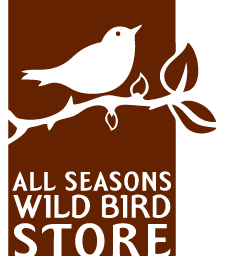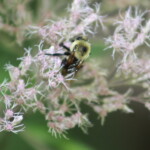Ann’s Window to Nature

The Bad News ~
Ongoing habitat loss and decay continue to devastate wildlife and wildlands nationwide. In fact, in North America alone, we have lost roughly 3 billion songbirds in the last 50 years.
The Good News~
 We can make a difference in our own backyards with minimal effort and at very little cost. The State of Minnesota has launched a program called “Lawns to Legumes,” that offers planting guides and cost sharing grants for installing pollinator-friendly native plantings in residential lawns. #Lawns2Legumes
We can make a difference in our own backyards with minimal effort and at very little cost. The State of Minnesota has launched a program called “Lawns to Legumes,” that offers planting guides and cost sharing grants for installing pollinator-friendly native plantings in residential lawns. #Lawns2Legumes
Tips:
- Leave the leaves.
- Build a brush pile.
- Save a snag.
- Save the steams.
- Provide a safe water source.
- Redefine the perfect lawn.
How would planting a small pollinator garden, leaving the leaves, or saving the stems help backyard songbirds? It’s all about the caterpillars. So, who cares about caterpillars? Baby birds, that’s who. Caterpillars are the primary food source for 39%-51% of nestling songbirds. Soft, fat, squishy caterpillars are high in fat, high in protein, and high in carotenoids, which are essential to overall bird health.
Birds that eat caterpillars include:
- Woodpeckers
- Warblers
- Hummingbirds
- Cardinals
- Wrens
- Bluebirds
- Swallows
- Chickadees
- Orioles
How many caterpillars does it take to rear one clutch of Black-capped Chickadees? 6,000-9,000 caterpillars. That’s a lot of caterpillars!
Caterpillars need native plants, leaf piles, and plant stems to complete their lifecycles. In other words, songbird breeding success is highly dependent on healthy caterpillar populations. If we want more songbirds we need more caterpillars, which means we need more native plant species, brush piles, leaf debris, and plant stems.
Photos: Ann McCarthy
Productive habitat can be created in small patches. This approach is manageable. Doable.
By making little changes we will have a big impact. We can empower ourselves and our neighbors to make small but significant changes that will benefit bees, butterflies, birds, and bats in your own backyard. You don’t have dedicate your entire yard into wildlife. Just a patch.
There are many examples of urban and suburban homeowners who have created a wildlife sanctuary on a standard sized city lot.
- Shrink your lawn.
- Plant native species. (Native Plant Finder National Wildlife Federation)
- Add a clean water source.
- Avoid yard lights at night.
- Reduce or eliminate pesticide use.
- Leave the leaves-many caterpillar species cocoon in leaf litter during the winter months.
“Knowledge generates interest, and interest generates compassion,”
― Douglas W. Tallamy, Nature’s Best Hope: A New Approach to Conservation that Starts in Your Yard
We can make a difference every day in little ways.
Source material: Nature’s Best Hope Presentation by Dr. Doug Tallamy from the University of Delaware for the National Wildlife Federation, and author of “Nature’s Best Hope, How You Can Save the World in Your Own Backyard.”





